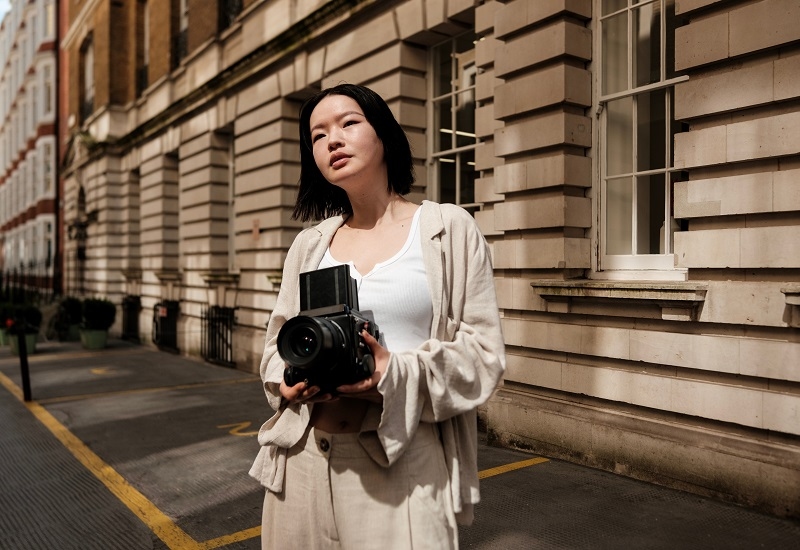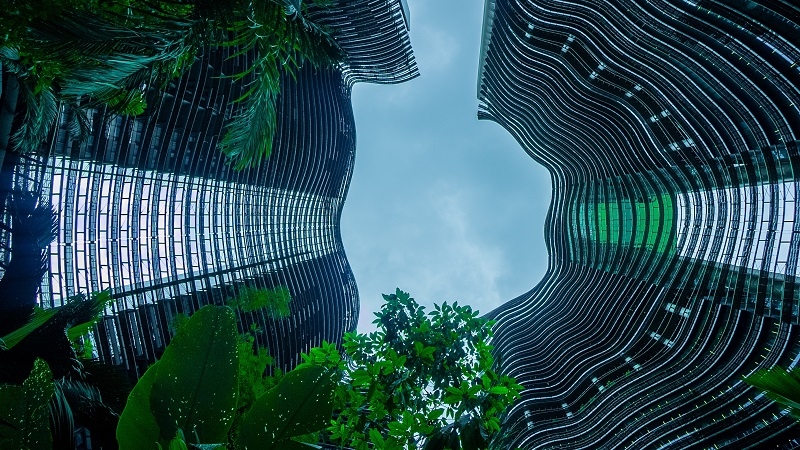
Architectural photography is a distinctive art genre that opens the door for photographers to discover and praise the art of architecture. It is not just the mere act of taking a photo of a building; it requires a deep understanding of the design, the shape, and the feelings that the place can generate.
No matter if you are photographing modern skyscrapers or historic landmarks, architectural photography offers you the means to create a story through the built environment.
Basically, architectural photography is about showing buildings and other structures in an attractive and truthful manner. It entails the use of technical skills as well as the injection of creativity to feature the core of the design.
The photographer must always be aware of the light source, the camera position, and the framing of the shots so as to make the respective photos show off both the outside and inside of the buildings.
Despite this fact, the proper equipment can still facilitate the accomplishment of your goals and help you to show your artistic side. To achieve high-quality results, picking the best lenses for architecture is a significant step. Most photographers will prefer wide-angle lenses due to the fact that they can shoot large structures with minimal distortion. Architects also use tilt-shift lenses very often in architectural photography because of their ability to modify perspective and prevent converging vertical lines.
Tripods are very helpful in preventing camera movements, especially when interiors are being shot or in the case of low-lit areas. Besides that, a good camera with high resolution will be your ally in writing out the detailed story of architecture through textures and patterns, which are the most common materials related to architecture.
One of the biggest problems that architectural photographers encounter is how to keep the right perspective. Usually, buildings are tall and thus, it is inevitable that the photographer would shoot from a distance or an unusual angle. Without perspective control, it is possible for the vertical lines to appear as they are converging thus giving the structure a distorted look.
The use of tilt-shift lenses or changing the camera position can solve these problems. Furthermore, when you are hyper-aware of perspective control, it gives you the freedom to be creative while at the same time, you are still producing work which is compliant with the architect’s vision. This method is especially necessary when dealing with skyscrapers, historical monuments, or any building that has strong vertical lines.
Accuracy is very important when taking a photo of a building; however, creativity is what makes architectural photography really interesting. Shooting buildings creatively can turn everyday structures into eye-catching pieces of visual art.
Which one of the creative shooting methods do you use, you can go beyond the mere documentation and create visual art that remains in people's memories.

Symmetry is an important factor in architecture, and it can be the main idea in your photography. A lot of buildings, notably those of classical or modernist designs, employ symmetry to generate equilibrium and aesthetic appeal.
Your photos focusing on symmetry can be like a magnet for the viewer’s attention. By centering doors, windows, or arches into the frame, one usually improves the degree of order and harmony perception. Besides that, Architecture's symmetrical shapes function seamlessly with the leading lines thus inviting the viewer's gaze to follow them until they get to the focal point of the photo.
Exterior architectural photography is merely one facet of the genre. The interior of buildings is a new universe to express the conception, illumination, and spatial layout. Photographing inside necessitates foresight since the spaces are sometimes tight, and the light source may vary.
Making the composition neat and empty of things that can be distracters, and additionally putting the spotlight on the architectural features rather than on the distractions that are around is the way that photographers work.
The interior photography guide tells one to be patient and detailed. The first and foremost function of each photograph must be to present the atmosphere and utility of the area besides being visually attractive.
Without a doubt, architectural photography cannot do without light. The impact of light upon a building may, therefore, also alter the look of the edifice in a quite significant manner. The reason is that during these two times the sunlight is soft and coming from one side only, which gives a stunning effect to both surfaces and shapes. Whereas the strong sunlight of the middle of the day produces bright and very short shadows.
In the same way, one can point with shadows to direct the viewer's eyes to different patterns and structural details such as arches. Photos taken at night of buildings that are lighted can be another way to attract people attention toward the differences between natural and artificial light and the city lights.
Composition is the base of any picture that is taken and in the case of architectural photography, composition is a very important factor. The use of perspective lines, inner frames, and geometric shapes can help the person who is looking at the photo to better understand the design of the construction and to direct the viewer's gaze towards the photo.
Some practical tips for architectural photography:
Just like any other step, post-processing is inseparably linked with architectural photography. It is able to do so much by itself through registration of the changes that are to be made as far as contrast, sharpness, and perspective are concerned while at the same time not interfering with the original character of the photo.
Architecture photography is a talented and visionary artist’s success story, a genre that a technically savvy artist might combine with artistic intuition. By learning how to effectively use perspective to your advantage and creatively photographing buildings to the fullest, discovering and capturing symmetry in architecture, and mastering the art of interior photography, you practically have no limits to where you can go and what you can do with this genre.
Practicing this genre, trying out different methods, and letting your pictures be the mediums of communication are the things you should do.
This content was created by AI